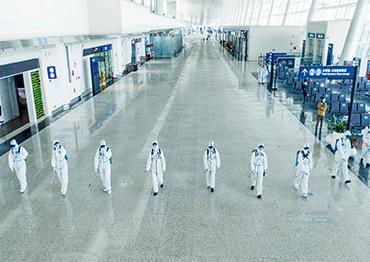On August 28, a court in Harbin, capital of Northeast China’s Heilongjiang Province, announced the auction of 98 percent of the shares in Longjiang Airlines, a small private airline based in the province.
Earlier in the month on August 4, Wuxi Communications
Industry Group, an SOE under the administration of Wuxi, Jiangsu Province, announced that it had signed a framework agreement with Yunnan Jingcheng Group on Tuesday to buy shares in Ruili Airlines, a regional airline based in Kunming, capital of Southwest China’s Yunnan Province. Yunnan Jingcheng owns 70 percent of Ruili Airlines, which has 20 aircraft, flying 74 routes covering 43 domestic and foreign cities as of June.
Wuxi has long been trying to develop into an aviation hub to boost its economy. It was reported that the city was in talks with the troubled Hong Kong Airlines, Hong Kong’s third-largest carrier.
On July 2, Hongtu Airlines, a private regional carrier based in Yunnan Province, moved its headquarters to Changsha, capital of Central China’s Hunan Province, after securing a large investment from the Hunan provincial government. With 12 aircraft, the carrier is the first based in the province.
Back in January, the Beijing-based Okay Airways, China’s first private airline, received an investment of 2.1 billion yuan (US$304m) from China Huadian Corporation, an SOE administered by the central government and the Hong Kong-listed real estate company Sino-Ocean Group Holding.
The trend of local governments acquiring private air carriers through SOEs under their control had already started before the Covid-19 pandemic. In December 2019, Qingdao Airlines, a private carrier based in Qingdao, an economic hub in Shandong Province, that had 25 Airbus A320 aircraft, was acquired by Qingdao City Investment Group, an SOE administered by the Qingdao city government. Starting operations in 2016, the carrier had 25 A320s at the end of 2019.
The deal regarding Hongtu Airlines’ change of ownership also was made in December 2019. “For some local governments, having a local air carrier is one of their major development strategies,” Li Hanming, an aviation industry analyst, told NewsChina.
As China’s aviation authorities suspended approval for new charter airlines in the past few years to improve safety, acquiring existing locally operated air carriers became the only viable way to have a coveted airline company. Given aviation’s reliance on economic vitality and tourism, the alliance between airlines and local governments is considered a no-brainer.
“If these acquisitions are a success, more local governments may follow suit,” said Li Hanming, “If so, there might not be enough regional air carriers to grab.”
Chinese media reports that several regional air carriers, including Beijing Capital Airlines, GX Airlines, and Urumqi Air, are in talks with authorities in Beijing and the regional governments of Guangxi Zhuang Autonomous Region and Xinjiang Uygur Autonomous Region over changes in ownership. Li said that the Covid-19 pandemic may have provided local governments a chance to “buy cheap.”

 Old Version
Old Version
